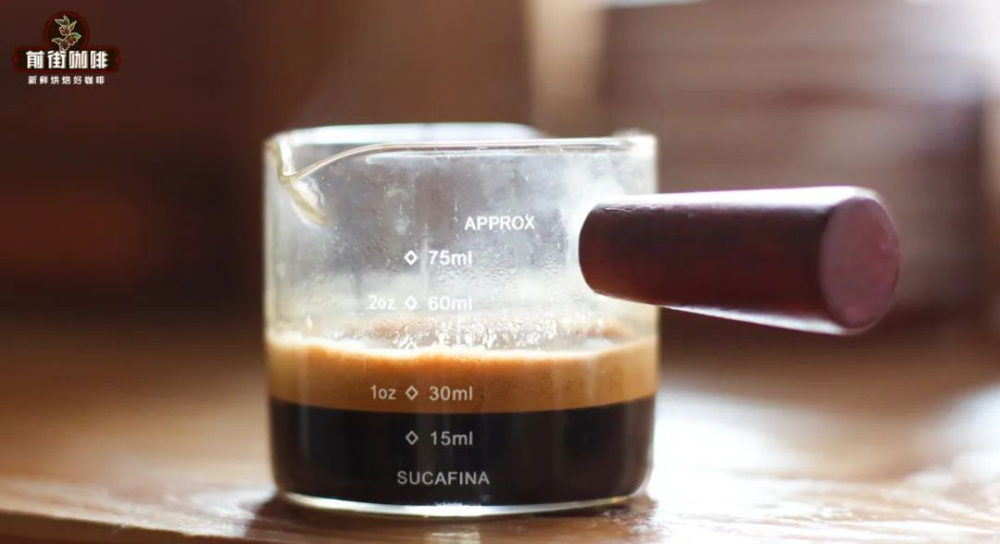How long does it take to defoam latte? How to Reduce the Defoaming Rate of Latte Coffee
The surface of the freshly made latte is exquisite, but if you don't drink it all the time, the delicate foam on the surface will break down and become collapsed, rough and uneven.

This process is "defoaming". In fact, after the foam is played well, it begins to dissipate slowly. After making a latte, the fusion of milk foam and oil will form a more stable structure, but generally speaking, it will defoaming and decomposing. Although the foam on the surface of the latte will eventually break down, the decomposition process is also slow and fast. Some lattes begin to show obvious bubbles after 2 minutes, while others do not show obvious defoaming phenomenon until 15 minutes. One of the ways to measure the quality of a latte is to see whether the foam is stable or not. The stability of latte milk foam mainly depends on three points-the quality of milk foam, the quality of espresso oil and the quality of fusion. Quality of milk foam want latte foam is very stable, defoaming is very slow, delicate and good fluidity of milk foam is the most basic. Note that the thicker the foam, the faster the defoaming will be. If you order a latte and a cappuccino at the same time, you can always see the rough bubbles of the cappuccino first. This is because it is more difficult for thick milk bubbles to blend evenly with oil. Of course, some unintentional habits will also speed up the speed of defoaming. For example, after getting rid of the milk foam, the subconscious earthquake tank (tapping the table with the milk tank), this practice is to eliminate the big bubbles in the milk foam, but also speed up the layering and decomposition of the milk foam and milk.

The quality of concentrated oil the oil of espresso also affects the defoaming speed of latte foam. The relatively stable oil is delicate, fluidity and non-caking, and the thickness of the oil accounts for about 1 / 3 of the espresso.

The espresso beans used in Qianjie stores usually grow beans for about 10-14 days. After the coffee beans discharge a large amount of carbon dioxide, the extracted espresso oil will be delicate, flowable and stable.

If you use coffee beans that are too fresh to extract espresso, there will be a lot of fat at first, but these oils are usually rough, porous, thick and even caked. A large area of decomposition will occur after being placed for more than 20 seconds. This is because too much carbon dioxide is pressed into grease, and these gases are more active and quickly break down the coffee oil and dissipate. So there will be a phenomenon that the coffee oil that has just been extracted is very rich, but it disappears after a while. Fusion quality even with high-quality milk foam and coffee oil, the two need to be thoroughly integrated evenly in order to be stable. To see whether the fusion is good or not, we only need to see whether the color of the "golden circle" is very uniform and whether the outline of the pattern is clear and clear. Usually the first defoaming phenomenon is the uneven fusion, that is, the place where the color is dark and light. Therefore, the cleanliness of the "golden circle" is also one of the measures of the quality of a cup of latte.

In addition to these three points, there are some small details that are difficult to observe on a latte. For example, if you use a preheated cup for a latte, the foam on the surface will defoamer more slowly than with a cool cup, and the residual water stains in the cup will easily make the circle of foam near the edge of the cup dissipate more quickly.
Important Notice :
前街咖啡 FrontStreet Coffee has moved to new addredd:
FrontStreet Coffee Address: 315,Donghua East Road,GuangZhou
Tel:020 38364473
- Prev

How to brew coffee beans when they are not fresh? Can you still drink expired coffee beans?
Although it is said that "if you like (drink coffee), it will not be stale at all!" But sometimes when I see the discount, I can't stop buying too much to drink, or the "sheep" delay drinking coffee, the result is that the coffee beans are no longer fresh. So are these coffee beans still drinkable? We are now drinking coffee to pursue.
- Next

How many degrees of water is the best for making coffee in winter? the best temperature of hand-brewed coffee is recommended.
I wonder if my friends have found such a problem in making coffee recently, that is, when making coffee with the same parameters as usual, the taste of the coffee is lighter than before, and the sweetness is not so obvious. In fact, the reason for this phenomenon is that the recent cold weather also affects the temperature of the water when we make coffee. If you have something to do with
Related
- Beginners will see the "Coffee pull flower" guide!
- What is the difference between ice blog purified milk and ordinary milk coffee?
- Why is the Philippines the largest producer of crops in Liberia?
- For coffee extraction, should the fine powder be retained?
- How does extracted espresso fill pressed powder? How much strength does it take to press the powder?
- How to make jasmine cold extract coffee? Is the jasmine + latte good?
- Will this little toy really make the coffee taste better? How does Lily Drip affect coffee extraction?
- Will the action of slapping the filter cup also affect coffee extraction?
- What's the difference between powder-to-water ratio and powder-to-liquid ratio?
- What is the Ethiopian local species? What does it have to do with Heirloom native species?

